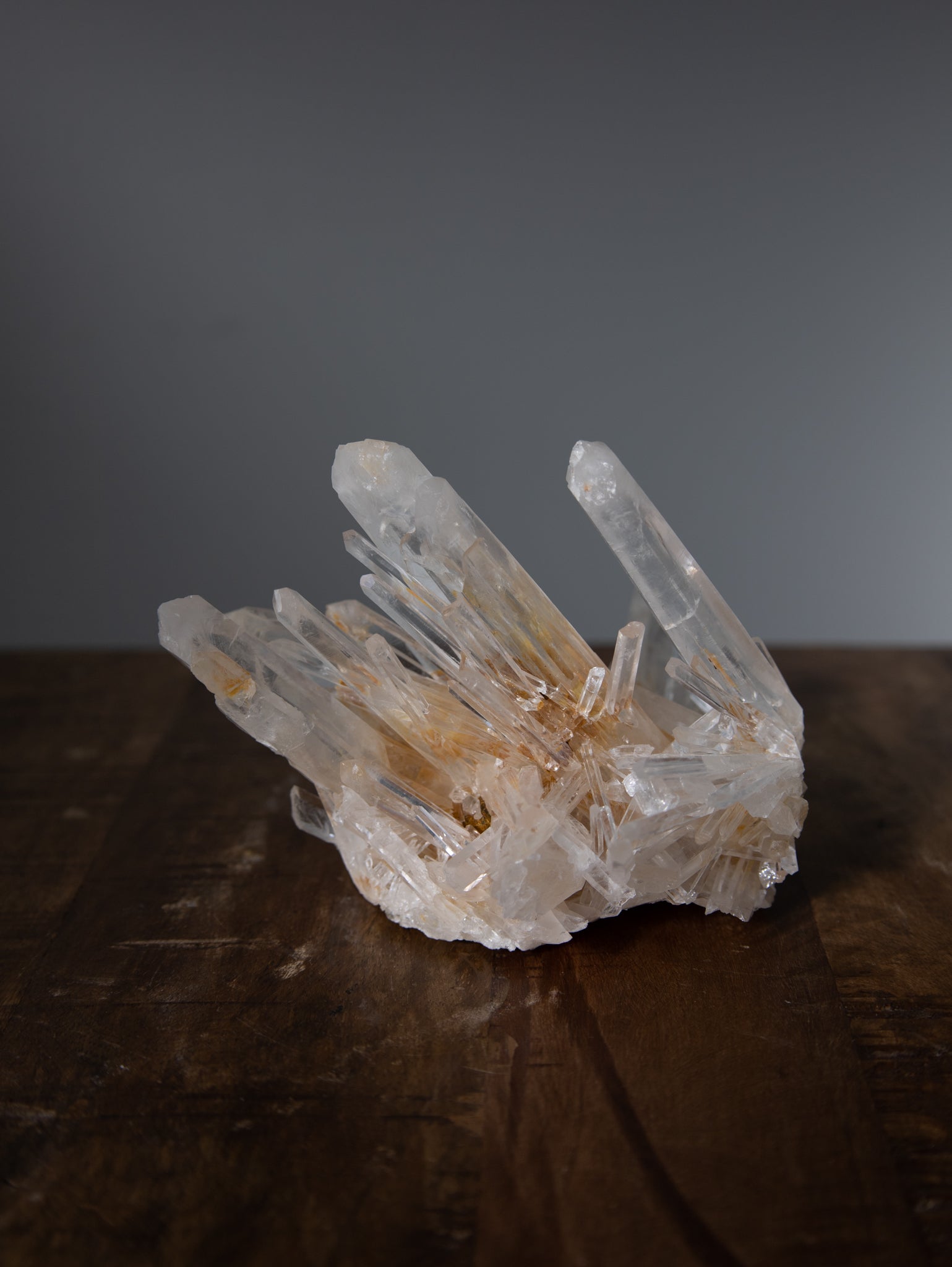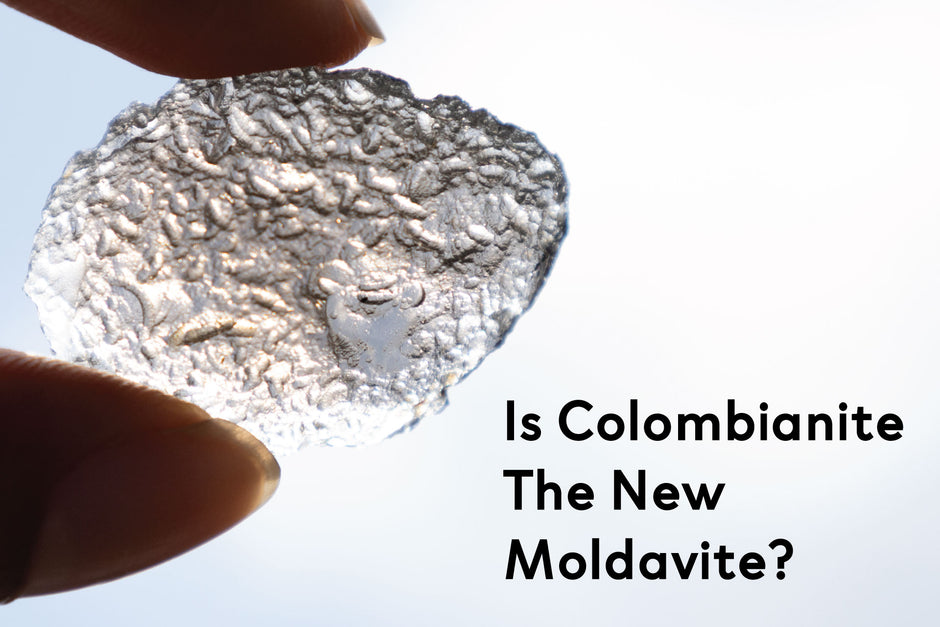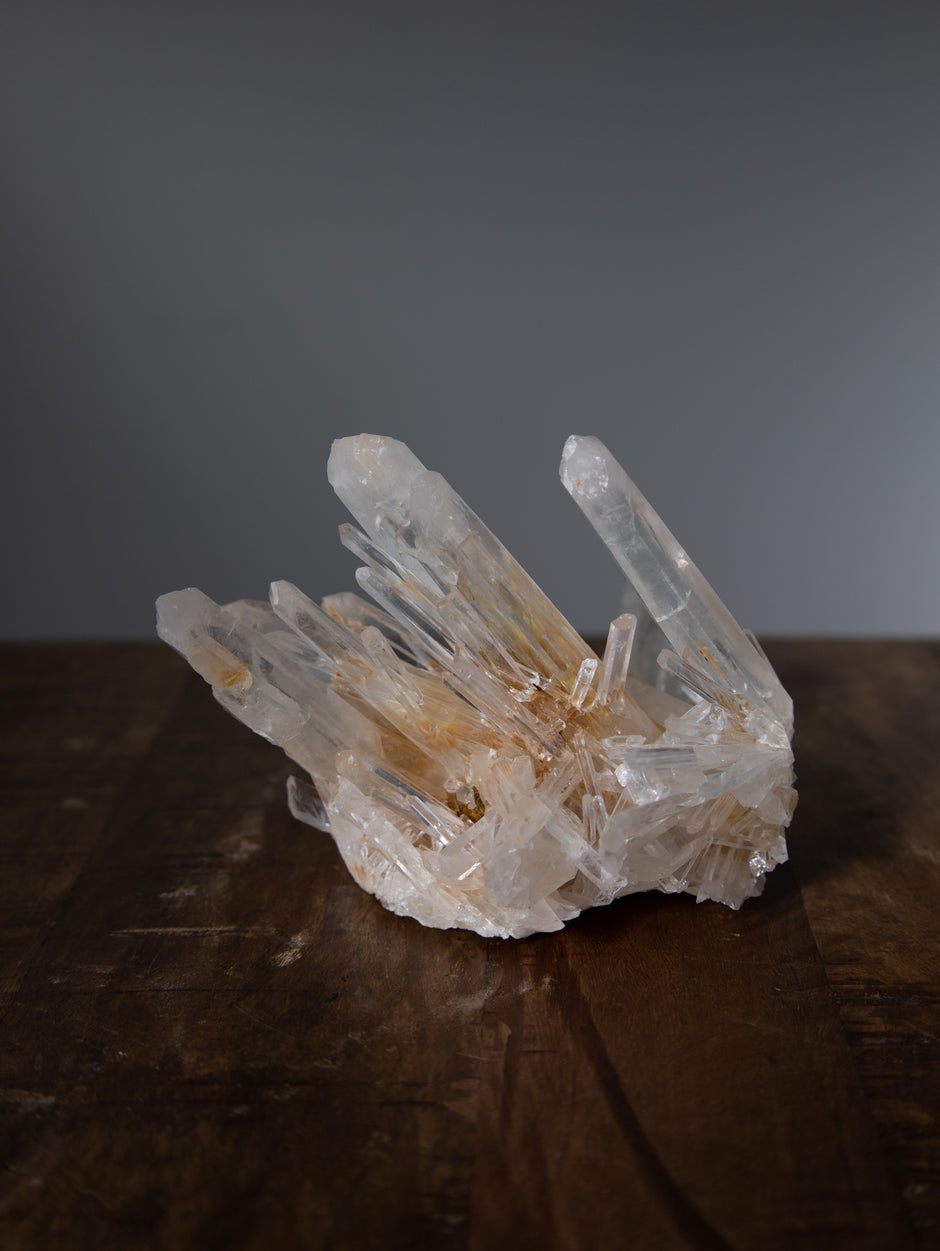Quartz is one of the most common minerals found on Earth and can be found in igneous, metamorphic and sedimentary rocks. When silicon dioxide (silicon and oxygen) cools it forms quartz. On the Mohs scale, Quartz ranges from 7-7.5.
Pure quartz is clear while heat, radiation and a combination of other minerals form quartz of different colors. Other quartz variations include Amethyst, Citrine, Milky Quartz, Rose Quartz and Smoky Quartz.
High levels of radiation and iron during the crystal formation contribute to the purple hue of Amethyst. These form at a much higher temperature than citrine
Citrine rages from yellow, orange to dark brown. Most citrine on the market are heat treated amethyst. Naturally occurring citrine is often found in places like the Congo having a smoky hue.
Radiation and aluminum contribute to the dark due of Smoky Quartz. Sometimes these are baked to enhance the smokiness or darkness of the crystal.
Ritulated Quartz come in different forms from golden rutile to black tourmalinated quartz. During formation, the quartz grows around the rutile.
Halloysite inclusions which are minerals commonly found is clay form white tip, sometimes called mango quartz.
Tremolite in quartz form the white inclusions of white tips quartz.



